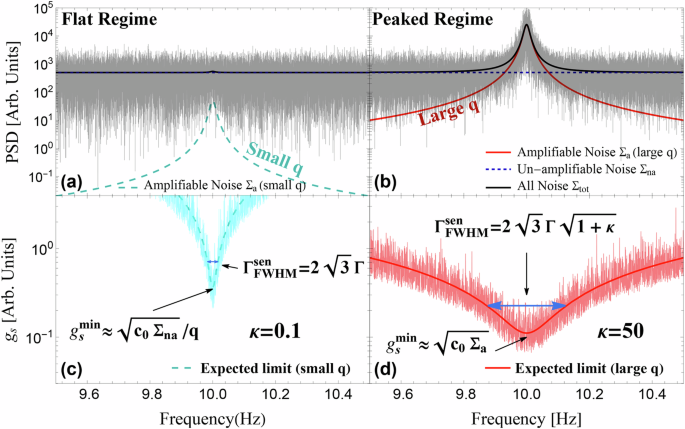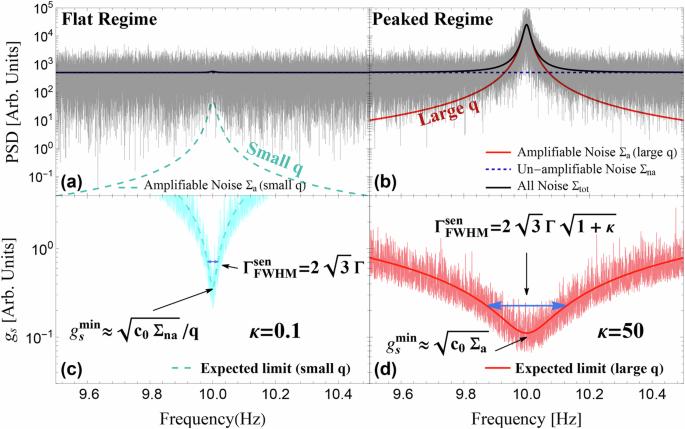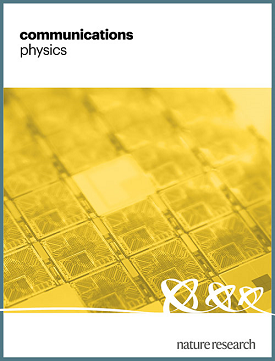Constraining ultralight dark matter through an accelerated resonant search
IF 5.4
1区 物理与天体物理
Q1 PHYSICS, MULTIDISCIPLINARY
引用次数: 0
Abstract
Typical weak signal search experiments rely on resonant effects, where the resonance frequency is scanned over a broad range, resulting in significant time consumption. In this study, we demonstrate an accelerated strategy that surpasses the typical resonance-bandwidth limited scan step without compromising sensitivity. We apply this method to an alkali-noble-gas spin system, achieving an approximately 30-fold increase in scanning step size. Additionally, we obtain an ultrahigh sensitivity of 1.29 fT ⋅ Hz−1/2 at around 5 Hz, corresponding to an energy resolution of approximately 1.8 × 10−23eV ⋅ Hz−1/2, which is among the highest quantum energy resolutions reported. Furthermore, we use this sensor to search for axion-like particles, setting stringent constraints on axion-like particles (ALPs) in the 4.5–15.5 Hz Compton-frequency range coupling to neutrons and protons, improving on previous limits by several-fold. This accelerated strategy has potential applications in other resonant search experiments. Weak signal detection, as in the case for the search of Dark Matter, relies on the resonant effect, when many frequencies are scanner in search of the signal, but this is very time consuming. The authors present a magnetometry method that combines high sensitivity and a wider parameter space coverage adopting an artificially enlarged resonance width, increasing the scanning efficiency.


通过加速共振搜索制约超轻暗物质
典型的弱信号搜索实验依赖于共振效应,共振频率的扫描范围很广,导致大量时间消耗。在本研究中,我们展示了一种加速策略,它在不影响灵敏度的情况下超越了典型的共振频率受限扫描步骤。我们将这种方法应用于一个碱-惰性气体自旋系统,使扫描步长增加了约 30 倍。此外,我们还获得了 1.29 fT ⋅ Hz-1/2 的超高灵敏度,频率约为 5 Hz,对应的能量分辨率约为 1.8 × 10-23eV ⋅ Hz-1/2,是目前已报道的最高量子能量分辨率之一。此外,我们还利用这种传感器搜索类轴子粒子,在与中子和质子耦合的4.5-15.5赫兹康普顿频率范围内对类轴子粒子(ALPs)设定了严格的限制,比以前的限制提高了数倍。这种加速策略有可能应用于其他共振搜索实验。
本文章由计算机程序翻译,如有差异,请以英文原文为准。
求助全文
约1分钟内获得全文
求助全文
来源期刊

Communications Physics
Physics and Astronomy-General Physics and Astronomy
CiteScore
8.40
自引率
3.60%
发文量
276
审稿时长
13 weeks
期刊介绍:
Communications Physics is an open access journal from Nature Research publishing high-quality research, reviews and commentary in all areas of the physical sciences. Research papers published by the journal represent significant advances bringing new insight to a specialized area of research in physics. We also aim to provide a community forum for issues of importance to all physicists, regardless of sub-discipline.
The scope of the journal covers all areas of experimental, applied, fundamental, and interdisciplinary physical sciences. Primary research published in Communications Physics includes novel experimental results, new techniques or computational methods that may influence the work of others in the sub-discipline. We also consider submissions from adjacent research fields where the central advance of the study is of interest to physicists, for example material sciences, physical chemistry and technologies.
文献相关原料
| 公司名称 | 产品信息 | 采购帮参考价格 |
|---|
 求助内容:
求助内容: 应助结果提醒方式:
应助结果提醒方式:


